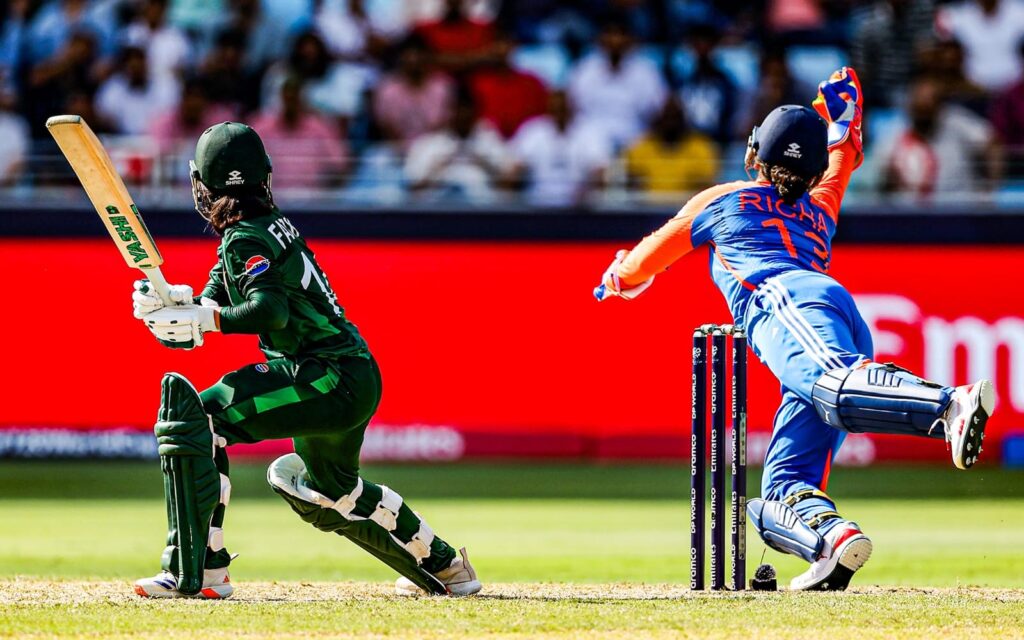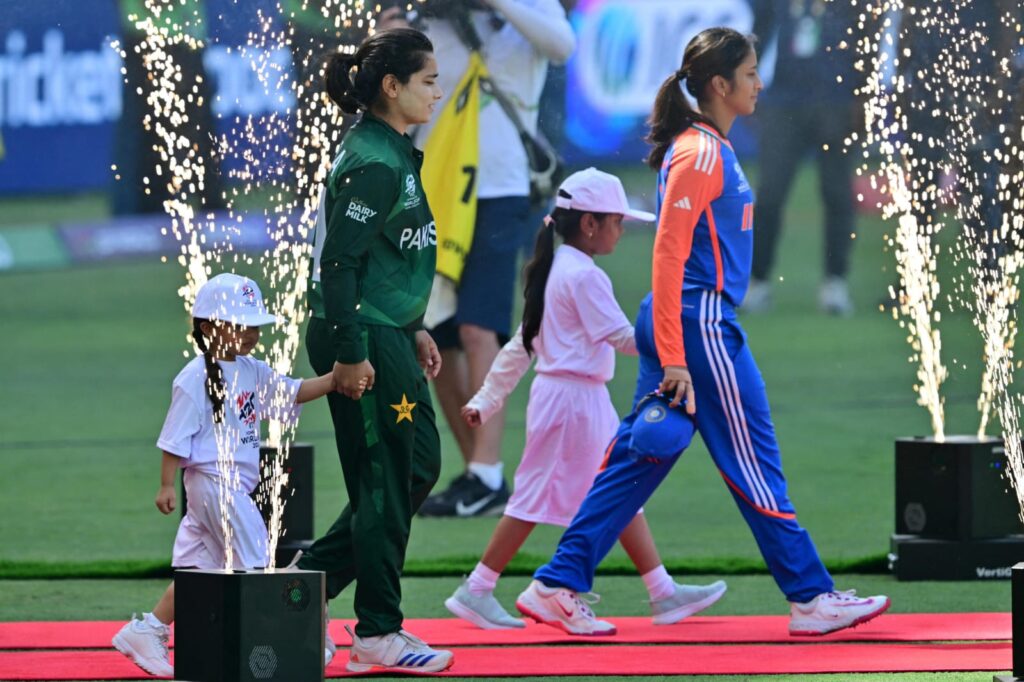
Pakistan’s cricket teams, both men and women, are equally poor at the moment. And it is a real problem for the world game. The sport needs a strong Pakistan and, for the moment at least, we don’t have that. The win against Sri Lanka to start the Women’s T20 World Cup campaign was an aberration and, against India, the mediocrity of the side was yet again apparent. India made Pakistan look good at times, and were poor as well.
For the India-Pakistan contests to retain their charm, we need a better Pakistan. The cricket world needs a team which is not a pushover, and one that can stand up and compete. In fact, every Pakistani journalist I spoke to on Sunday evening agreed that India started as overwhelming favourites, and it would have been a real surprise if Pakistan had managed to beat Harmanpreet Kaur and her team. That’s not what this rivalry needs going forward.
Unless there is competition, there is no rivalry. Even a poor India were good enough in the end. Had it been any team other than Pakistan, India could have lost. Fans, after a point, do not want to watch one-sided games and would start to take them for granted. Frankly, the India-Pakistan contest, more so in women’s cricket, is turning into an overhyped piece spectacle which the cricket world can live without.
So, what’s the fate of the India rivalry going forward? Will fans continue to embrace it the way they have? Put bluntly, can the political significance attached to the India-Pakistan rivalry keep adding gloss to it in the future?

While there is no definitive answer to this question just yet, suffice to say the evidence at hand conclusively proves the adage that sports and politics don’t mix wrong. It is because sports and politics are always intertwined in the sub-continent that India-Pakistan is still the contest that it is. People watch it because there is something more than cricket attached to the contests. While cricket is the centre piece, the extraneous factors attached to it make victory in these matches a huge deal.
Yesterday’s game in Dubai was a perfect case study. Despite the scorching heat, with temperatures touching 40 degrees Celsius, there were a few thousand fans in the stadium. Also, the concurrent viewership for the game was over a million on Disney Star, the host broadcaster. The match was watched by millions and the scenes in the stadium added to the spectacle.
Make no mistake, cricket needs this rivalry. But not in the current form where one team barely competes. In the powerplay, Pakistan were a pathetic 29-2. In the next four overs, they added another 12 while losing two more wickets. Except Nida Dar and the captain Fatima Sana, no other player showed any intent. For India, desperate for a win, it should have been a walk in the park. That India scored less than Pakistan in the powerplay showed how underwhelming India have been. But it also drew attention to how mediocre Pakistan were that they couldn’t exploit the opportunities that came their way.
From an Indian standpoint, one needed to see them up the Net Run Rate (NRR). A win was more of a formality, and may not be enough in the end. India needed to finish the game quickly to get the NRR back on track. They did not. For some strange reason, they were slow and timid. They looked scared of losing, and hence showed little intent. Harmanpreet changed her batting order, which again signalled of lack of confidence. Why, after one game, was the question.
While there is not much to rejoice about after this win against Pakistan, it is also fair to say that India will be more relieved than anything else. At least, a win under the belt will give Harmanpreet a breather from all the negativity around. For world cricket, however, the signs are ominous. Pakistan need to get better, and there are few signs of that on the horizon. India too have to be far better than what we have seen so far, otherwise the tournament could well be over for them on October 13, against Australia.
Also Read: Bowlers headline India’s hard-fought win over Pakistan



